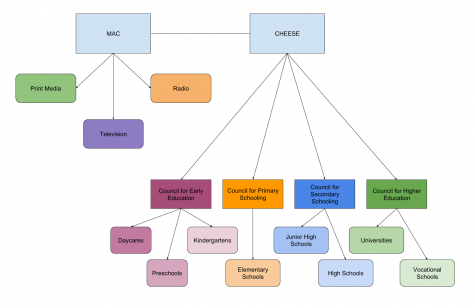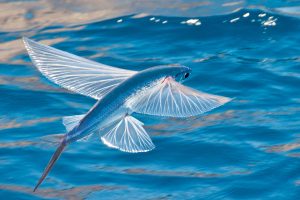Flying Fish vs. The World – Understanding the Plight of the Winged
November 25, 2018
Flying fish get a lot of flak for being, well, flying fish. “Fish shouldn’t have wings; that’s just creepy,” and “Why does something that lives in the ocean need to fly?” are a couple of the many commonly used phrases to scoff at the perceived uselessness of the animal’s wings. This is an understandable reaction; why should something that swims its way through life have wings at all? However, looking deeper into the causes and effects these wings have on the fish’s physiology, behavior, and society reveal just how useful these appendages really are—and why dissidents should give their utility a second thought.
First, we should address exactly what these wings are used for. The term “flying fish” is a bit of a misnomer, as these creatures do not fly. Rather, their movements above water are perhaps better served by the term “gliding”. This is because they do not power their flight beyond their initial leap out of the water into the sky. Much like a college dropout who left school to found a startup company specializing in the manufacture of edible colored pencils, the fish will eventually be brought back down to the elevation it had started at. So what’s the point, then? Well, these fish use their wings to glide away from predators and their problems. By some accounts, these slippery deviants can float their way through up to 655 feet of sky before having to face their realities again. In addition, they take off at around 37 miles-per-hour, so standing in front of one is most certainly not advised. As it turns out, this strategy is quite effective. Different species of flying fish inhabit every corner of the Earth’s oceans, and they’ve existed for millions of years.
Now that we’ve established how flying fish use their wings, there may still be those in the audience who maintain that they are still bizarre disgraces that fly in the face of Mother Nature herself. While they do look somewhat like the unholy amalgamation of a frightened porgy and one of Da Vinci’s flying machines, we must look beyond the scales of these creatures to see their true worth. That is to say, the true value of these fish lie in their unabashed pursuit of their dreams. Indeed, the forerunners of the modern flying fish made a resolution, whether consciously or unconsciously, to not die horribly. As such, they pursued their dream without rest or hesitation for generations upon generations. Through the ages, they literally sprouted wings to escape their demise, becoming wonderful fairies of the sea in the process. Through hard work and dedication to their cause, flying fish joined the ever exclusive upper echelons of animals who can fly without the help of large chunks of metal, a community which includes members as prestigious as birds and some weird squirrels.

There should be no reason to hate flying fish for following their collective dreams. I, for one, believe that the undue misrepresentation of flying fish as slimy salamanders who traded their legs for wings is unfair, and should be rectified within our civilized society. As such, I have prepared a suggestion—a grand plan of sorts. We, as a people, have a responsibility to launch a Media Adjustment Campaign (MAC) accompanied by a Council for Honest Explanation and Exemplification in Scholarly Education (CHEESE), together referred to as the MAC&CHEESE paradigm (Fig 1). Simplified, the MAC portion of the project will serve to use the media to realign the peoples’ impressions of flying fish into more accurate and less hateful perceptions. Through increased representation via greater representation in film acting roles and increased news outlet coverage, the MAC will help to bring the image of flying fish as profoundly beautiful creatures to public light. Acting parallel to the MAC, the CHEESE is designed to guide discussion of sensitive, flying fish related topics in academic environments across the nation, ranging from primary education to university teachings. Curriculums in history, politics, and marine biology will be realigned to include the corrected perception of flying fish. Of course, this naturally involves rewriting and reprinting new editions of textbooks, but any expenses in public and private institutions will be subsidized through the CHEESE.
I firmly believe that together, we can use the MAC&CHEESE as a powerful tool to guide our society on the right path in accepting flying fish for who they really are: not as gross and weird and Nature’s 57th mistake, but as individuals just like you and me who follow their dreams to soar through the vast sky above.











